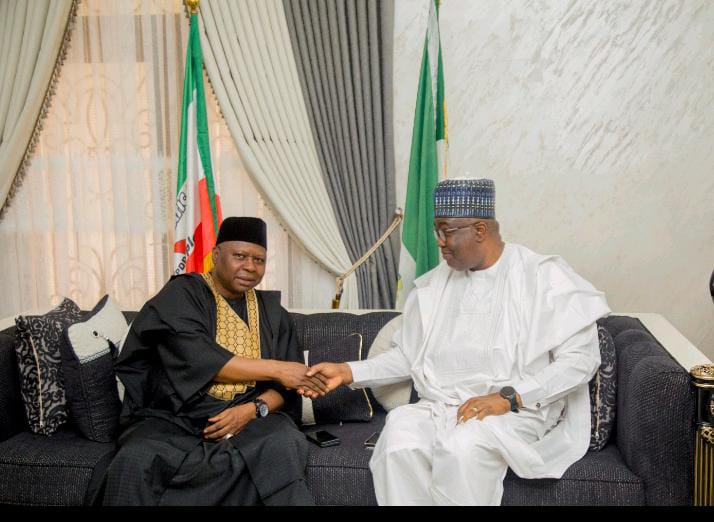
The Sahel is one of the poorest and most environmentally degraded regions of our planet. It is also considered one of the world’s most vulnerable areas to climate change, as temperatures there increase one and a half times faster than in the rest of the world.
This vulnerability is made worse by the region’s high dependence on rainfed agriculture and its natural resources to support food security and livelihoods, extremely rapid population growth, and chronic humanitarian crises due to recurrent drought, flooding, epidemics, and violent conflicts.
In Burkina Faso, Chad, Mali, Mauritania, and Niger – the countries that cover most of the Sahel, USAID is helping people, governments, and various organizations to develop the means necessary to attenuate the increasingly destructive impacts of climate change.
Mali – Data from 2017 show that temperatures in the country have increased by an average of 3 degrees Celsius, and that rains have reduced by a third since 1951.
One of USAID’s main areas of focus is agriculture. In the Sahel, agriculture is poorly mechanized and almost entirely reliant on the limited three to four months of variable summer rainfall (June–September), making it highly vulnerable to climate variability and change.
Agriculture in the Sahel is extensive and employs large swathes of the population. It contributes 40 percent of the combined regional GDP and employs nearly 70 percent of the labor force in Burkina Faso, Chad, Mali, and Niger, and 52 percent in Mauritania.
Sofara, Mali – A farmer planting a new crop, worrying about the lack of rain and the change of the seasons.
Climate change poses a serious threat to farmers. Various forecasts suggest that the region’s main harvests will decrease by 15 to 30 percent by 2080. Niger could potentially lose its entire rainfed agriculture by 2100.
Bankass Circle, Mali – A sandstorm threatens to bury a farmer’s field and crops. Extreme weather phenomena are becoming more frequent and more extreme in the region.
USAID implements several activities to help the people of the Sahel to manage these threats. For example, USAID supports efforts to restore the fertility of the land by using techniques that can also reduce soil erosion and increase water retention.
In Burkina Faso and Niger, over the past five years, 76,000 people applied these improved technologies to more than 120,000 hectares of land – the equivalent of nearly 70,000 soccer fields. As a result, farmers saw an average increase of 700 percent in sales.
USAID also helps farmers learn farming techniques such as soil conservation, efficient irrigation systems, conservation farming, food transformation, and promotes climate-smart seeds that better resist extreme weather conditions.
A farmer in central Burkina Faso
Up to 50 million people throughout the Sahel are pastoralists. As access to pastures is at an all-time low, violent conflicts between resident farmers and pastoralists have been on the rise. USAID contributes to reducing these conflicts by involving local governments, supporting communal land-management bodies, delineating animal migration corridors, and supporting the development of local conventions for the shared use of natural resources.
In a village in Southern Niger, this resulted in a 50 percent reduction in herder-farmer conflicts in just one year.
Sofara, Mali – A pastoralist guides his herd in a narrow corridor across farmlands. If the animals trample or eat crops on their way, conflicts with farmers may occur.
Another priority area is people’s access to and management of water resources. In the Sahel, surface water is limited and often seasonal, making groundwater a primary water source for many people in the region. However, declines in rainfall, increases in temperature, and more frequent droughts contribute to a decline in surface water availability and accessibility. For example, Lake Chad, the largest lake in the Sahel, has shrunk by 95 percent since the 1960s.
Centre-Nord Region, Burkina Faso – Three women displaced by conflict on their way back from fetching water some six kilometers away.
USAID works with various government entities so they are more capable of raising money and maintaining their water sources. For example, in Niger, USAID helped the government to set up the country’s very first water agency, which will equip the country to protect and share water among communities. Niger plans to set up approximately 15 water agencies in watersheds nationwide this decade.
Chadika, Zinder Region, Niger – A communal well
Although surface water is increasingly scarce, groundwater is fairly abundant in the Sahel. These are, however, far from urban centers. As part of its efforts to address water access challenges, in 2021 USAID researched and mapped out groundwater availability in several regions of Burkina Faso and Niger. The results were shared with local, regional, and national actors so they could better understand the potential and limitations of groundwater for humans, livestock, and agriculture in their respective areas, including where and how to drill.
Kaya, Centre-Nord Region, Burkina Faso.
Large parts of the Sahel are currently affected by violent armed conflicts that have resulted in the displacement of nearly three million people. These movements are usually from rural areas to urban ones, where a sudden population surge can exert immense pressure on already scarce resources such as food and water. In a part of the world where more than 10 million people are in a situation of acute food insecurity or worse, this can have devastating consequences.
Centre-Nord Region, Burkina Faso – Internally displaced women and host community members can wait up to half a day to fill a single 15 liter jug. This is just enough for one day for an average household.
Resource scarcity can increase the risk of inter-community conflict (e.g., between fishermen and farmers, farmers and pastoralists, locals and displaced people, etc.), intensify existing regional conflict, and trigger outbreaks of new conflict.
Mopti, Mali – Portrait of an internally displaced women (2019). She walked five days to flee violence and find refuge in Mopti, a town in central Mali.
In 2021, USAID aimed to provide life-saving assistance to an estimated one million people in the Sahel with a budget of more than $230 million dollars. In addition, USAID is linking its humanitarian assistance to long-term climate-sensitive activities. For example, in Burkina Faso, the USAID TerreEauVie activity assists communities hosting large numbers of displaced people to increase their ability to provide water to everyone.
Children in Gueri, a village in southern Niger.
USAID’s work in helping the people of the Sahel to mitigate the impacts and threats of climate change goes well beyond agriculture, water, land, health, and nutrition. USAID also provides assistance in the areas of health, nutrition, governance, access to finance, micro-enterprises, fisheries, ecosystems, micro-infrastructure, livestock, and many more, with a particular focus on the needs of women and youth.
This support is provided through more than 150 activities with an annual budget of $650 million. Besides helping people prepare for an uncertain future, USAID’s work successfully lifts people out of extreme poverty with spectacular results. For example, over the past five years, participants in agricultural activities in Burkina Faso and Niger increased their incomes by an average of 37 percent. Those involved in raising poultry activities saw their incomes increase by 50 percent.
As climate change is a key priority for the U.S. government, USAID will continue to help the people of the Sahel to accelerate their development efforts and build a freer, safer, and more prosperous future.
Sofara, Mali.
Source: USAID IN THE SAHEL
















